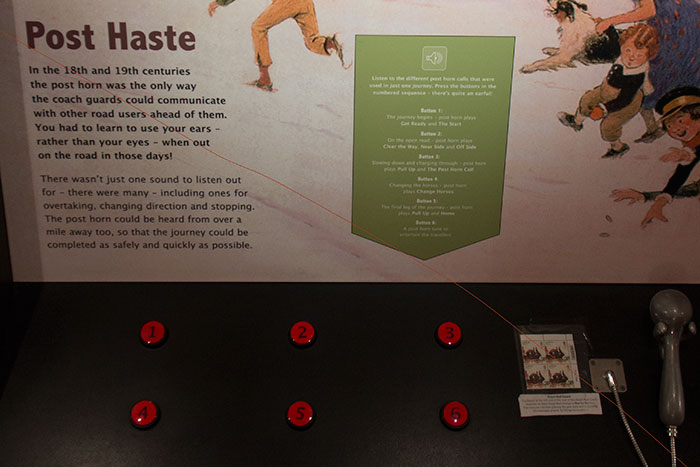Bath Postal Museum is a small museum in the centre and I’ve visited it on my holiday in Bath, as I have mentioned before. It was founded in 1979 by Audrey and Harold Swindells, in the basement of their house in Great Pulteney Street.

They have special exhibitions on display. Now there are two, Damage to Mails on Land A section of Adrian Hopkins’ famous Wreck Collection and the Berlin Airlift Commemorating the 70th Anniversary of Berlin’s division into East & West Sectors. As always, I picked a few exhibits I’ve enjoyed the most to highlight in my post.

These are the first postal stamps in the world. Britain was the first country to use them. The first stamp was used in Bath, on 2nd May 1840, few days before its official release.

The first post box installed in Britain was in 1852, in Jersey. These are box clevers. On top left is the first wall letter box, from 1857. The next one is two years older and on the top right is one used from 1861 – 1870. On the bottom row, the one of the left dates from 1871 – 1878, the middle one is the first wall box with changeable collection plate, and the last one is a wall box from King Edward VII’s time.

We love to dress up and this time we were able to try on some postman outfits. It’s so much fun.


Stagecoaches weren’t licenced to carry mail. To make the mail delivery safer, a new lightweight coach was designed by John Palmer. A trial run took place in 1784, from Bristol to London via Bath. These new coaches could carry eight people and mail. Horses were changed every 10 miles. The guard would sound the post horn so that the new four horses were ready in time. It took only 3 to 4 minutes to change the horses. The mail coach had the right to drive through tollgates without paying. A special signal was used: “clear the road”. If someone on that road didn’t move in time, he could be knocked into the ditch, without getting any compensation from the Post Office.
They were allowed to have breaks, like 20 minutes for a main meal. Stagecoaches were different, much slower and with longer breaks for passengers. Due to their speed, the mail coaches were more popular, despite being more expensive. In late 1830s, railways took over. The last mailcoach to still be used was to Wells, until 1859, when the city was bypassed by the trains.
This last picture shows an interesting exhibit. If you press those buttons, you can hear the post horn. It’s quite fascinating, the tunes were so long. I imagine it took a bit for them to learn all of them. It was also very load, being heard from over a mile.
The post horn played: Get ready, the start, clear the way, near side, off side, pull up, The post horn call, change horses, home. Of course, they would use the horn to entertain the travellers using the mail coach.
Bath Postal Museum is on 27 Northgate St, Bath BA1 1AJ. The entry fee is £4.50. They don’t have a car park, but there are plenty of places to park around Bath’s city centre. You can check for more details on their website.








I some how missed this on my trip to Bath. I’ll have to make sure I visit next time 🙂
It seems like a really interesting museum! Great to learn more about the past and little things you would never learn somewhere else. I love the photos in costume, they turned out great and it’s so fun to dress up!
Julia x
To be small, it’s filled with lots of interesting exhibits. I think it’s fun how many places you visit that include costumes which can be tried on.
I never miss the opportunity to try costumes. It’s too much fun. :))